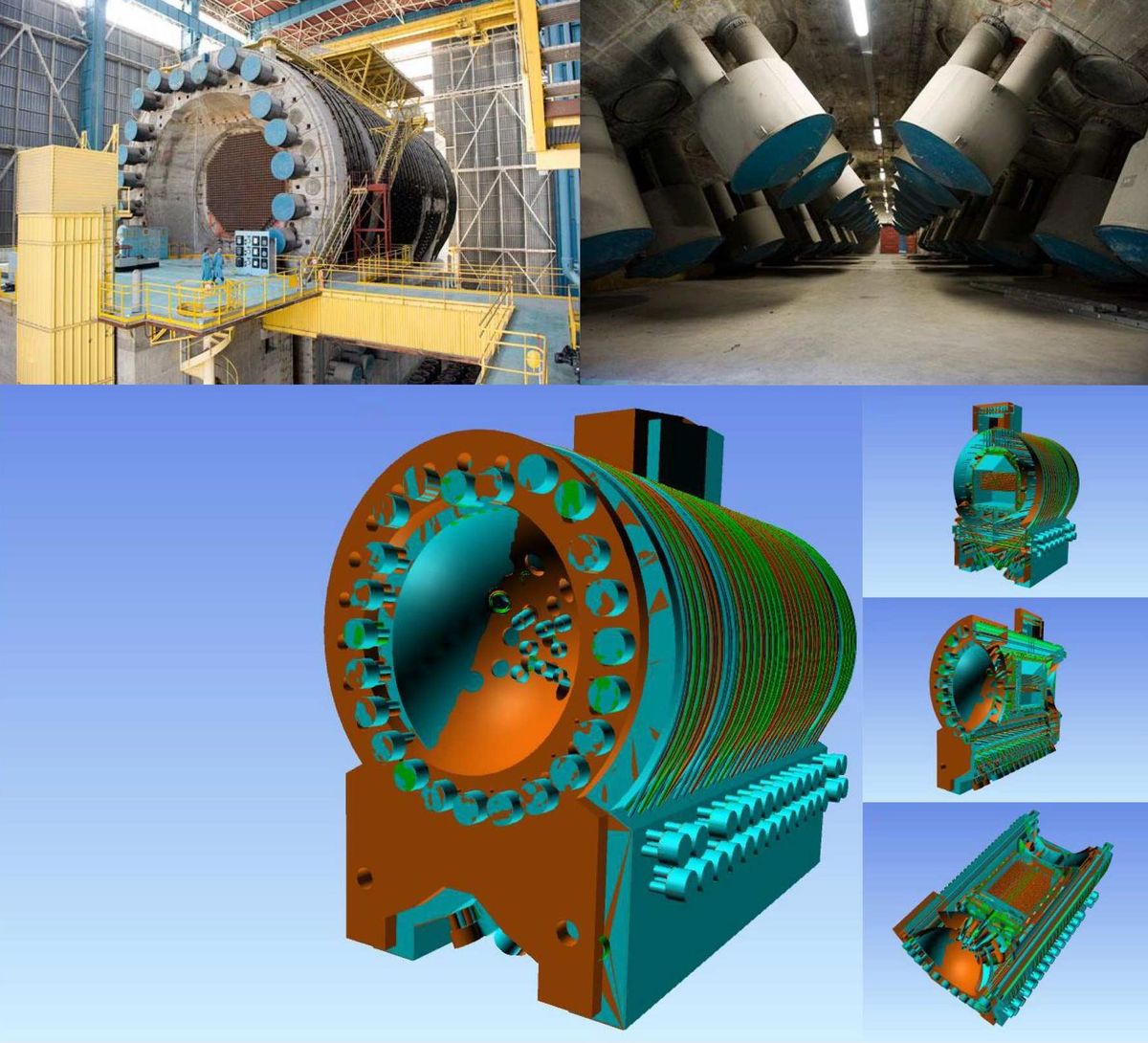Cosmic rays from deep space can help 3D-scan nuclear reactors, peering inside to see if they are safe, a new study finds.
When high-energy particles known as cosmic rays hit Earth’s atmosphere, they can generate massive cousins of electrons known as muons. Muons constantly bombard Earth’s surface from every angle—roughly one muon hits every square centimeter of Earth every minute at sea level.
Muons often zip through matter easily, but dense or huge objects can absorb or scatter them in a similar way to X-rays. By capturing a large number of muons passing through something, researchers can develop an image of it, a technique known as muon tomography, also known as muography.
Previous research used muography to scan Fukushima’s melted nuclear cores, see deep into the Great Pyramid of Giza, and analyze volcanoes. However, until now, muography of large, complex objects was limited to 2D images; 3D-imaging using muography was possible only for simple items.
Now, for the first time, scientists reveal they could use muography to 3D-image a nuclear reactor. “To me, the most exciting possibility [of this technique] is studying the inside of such complex, dense structures without touching them,” says study lead author Sébastien Procureur, a particle physicist at Université Paris-Saclay and the French Alternative Energies and Atomic Energy Commission (CEA).
The researchers analyzed the uranium-fueled G2 reactor in Marcoule, France, which generated power between 1958 and 1980—one of the country’s first nuclear reactors. G2’s coolant systems were removed from 1986 to 1996, and it has received regular inspections since then pending final decommissioning.
“It was one of the oldest reactors, built in the 1950s, so there was a real interest to study its potential aging,” Procureur says.
Another reason Procureur and his colleagues investigated G2 was because the reactor was operated by the CEA, the research team’s agency, making it easier to get authorization to examine it. Adding to its attractiveness as a test subject, G2 has an open area below the reactor, letting the scientists place muon sensors fully around it, he notes.
The scientists used four muon telescopes, collecting 27 scans from more than 20 locations surrounding the reactor, with a few days spent on each scan. They next used a new tomography reconstruction algorithm to develop a 3D map of the reactor’s internal structure from these 2D scans.
The researchers were able to 3D-image the graphite cube that G2 used to control nuclear reactions, as well as the cooling pipes and the concrete reactor structure. The dimensions and shapes of all these elements closely matched known models of G2, all without the algorithm receiving any data about the reactor aside from that collected using muography.
“We did not detect any problem in the reactor,” Procureur notes.
The most surprising aspect of this new work for Procureur was “that such a small number of 2D images was enough to obtain such a quality 3D reconstruction,” he says. Medical 3D imaging often relies on hundreds or thousands of 2D images, “and I was really not sure that just a few tens would allow for a decent reconstruction. This really exceeded my expectations.”
Although this new technique can image active reactors, “at this stage, it seems the biggest interest in this approach is to scan a reactor before its decommissioning, to make sure there is no bad surprise inside,” Procureur says. “Also, this could be performed in the case of an accident like in Fukushima.”
A number of companies around the world are currently working on commercializing muon telescopes, Procureur says. He notes that 3D muography could scan nuclear waste containers to check their integrity and predict how they might degrade over time. It might also find use in soil studies, mining exploration, and civil engineering.
“Archaeology is another field of interest,” Procureur says. “We are trying to apply this 3D reconstruction technique to the Great Pyramid.”
However, this new technique does have its limitations. “We cannot detect small cracks in the structure, for example,” Procureur says. “The sensitivity is not that high.”
The scientists detailed their findings online 3 February in the journal Science Advances.
- A Bittersweet Milestone for the World's Safest Nuclear Reactors ... ›
- Radiation Hardening 101: How To Protect Nuclear Reactor ... ›
- How to Make an Impossible Nuclear Reactor (3D Printer Sold ... ›
Charles Q. Choi is a science reporter who contributes regularly to IEEE Spectrum. He has written for Scientific American, The New York Times, Wired, and Science, among others.



